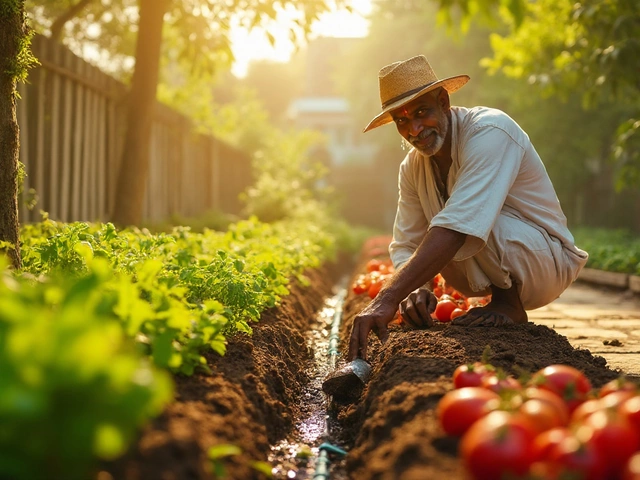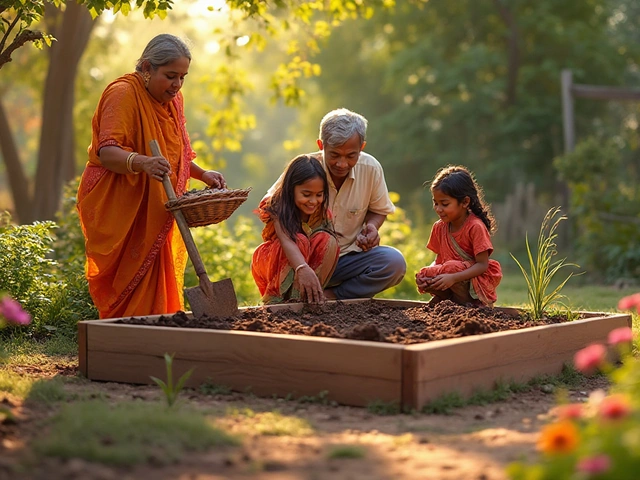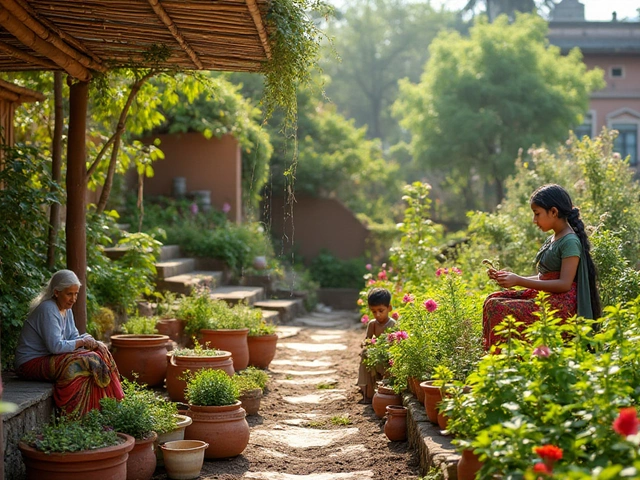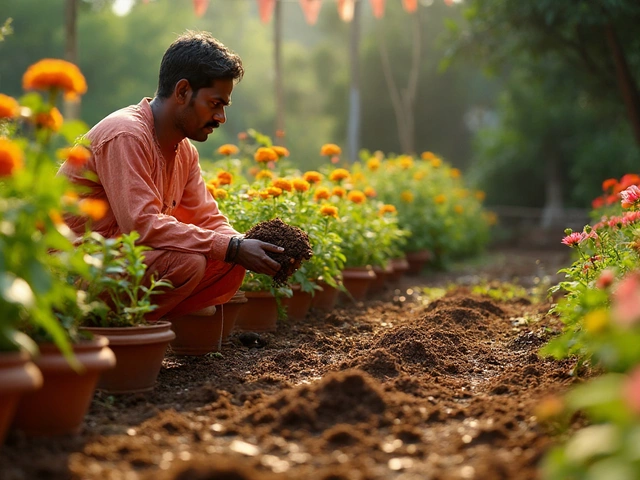Garden Hand Tools: Your Everyday Allies for a Thriving Garden
Whether you’re planting seedlings on a balcony or tending a backyard vegetable plot, the right hand tools make the difference between a smooth job and a frustrating one. In India’s varied climates, a sturdy trowel, a sharp pruner, or a comfortable weeder can save you time, energy, and even money. Below are the must‑have tools, how to pick the best ones, and simple maintenance tricks to keep them working year after year.
Must‑Have Hand Tools for Every Indian Garden
Trowel: Ideal for digging small holes, transplanting seedlings, and mixing soil amendments. Look for a stainless‑steel blade with a comfortable grip that won’t slip when your hands are sweaty.
Hand Fork (Cultivator): Great for loosening compacted soil, especially after monsoon rains when the ground can get heavy. A four‑tined fork with a short handle gives you control without bending too much.
Pruning Shears (Secateurs): Essential for shaping shrubs, cutting back roses, or harvesting herbs. Choose bypass shears for clean cuts on live wood and keep the blades rust‑free with a quick wipe after each use.
Weeder: A small, pointed tool that slides under weeds and lifts roots. In regions where weed growth spikes after the rains, a sturdy weeder prevents the need for chemical herbicides.
Garden Knife: Perfect for slicing root veggies, trimming dead leaves, or opening seed packets. A fold‑away style with a sheath keeps it safe in the toolbox.
Choosing the Right Tools for Indian Conditions
India’s heat and humidity can be tough on metal. Opt for tools with rust‑resistant coatings or made from carbon steel. For grips, pick rubber or silicone handles that stay cool under the sun. If you garden on a balcony, lightweight aluminium tools reduce strain when you’re moving them up and down stairs.
Don’t just buy the cheapest set. A poorly made trowel can bend, making it hard to push into soil and increasing the risk of hand injury. Investing in a reputable brand pays off with longer life and better performance.Another tip: match the tool size to your hand. A tool that’s too big forces you to over‑extend, while one that’s too small can lead to cramped movements. Try holding the tool before you buy – you should feel balanced and in control.
Easy Maintenance to Extend Tool Life
After each session, wipe off mud and sap with a dry cloth. For metal parts, a quick rinse with water and a light oil coat prevents rust. Sharpen pruner blades using a sharpening stone; a sharp blade cuts cleanly, reducing stress on the plant.
Store tools in a dry corner or a hanging rack. Hanging helps air circulate and keeps handles from warping. If you live in a coastal area with salty air, consider a silica‑gel pack in the toolbox to absorb moisture.
Regularly check for loose screws or bolts. Tighten them with a small screwdriver or wrench. A loose handle can snap unexpectedly, especially when you’re pulling a stubborn weed.
By following these simple steps, your garden hand tools will stay reliable through every season—whether it’s the scorching summer in Delhi or the monsoon‑filled months in Kerala.
Putting Tools to Work: Quick Tips for Everyday Tasks
When planting tomatoes, use the trowel to dig a hole twice as wide as the root ball. Tap the soil gently with the hand fork to settle it, then water lightly.
For pruning, cut just above a leaf node and angle the shears away from the bud. This encourages new growth without leaving a stub.
To remove weeds, insert the weeder’s tip under the leaf, lever it up, and shake the soil gently to expose the whole root. This method works best after a light rain when soil is soft.
These practical moves, combined with well‑chosen and well‑maintained tools, will make your gardening routine smoother, more enjoyable, and more productive.
Ready to upgrade your toolbox? Start with one or two essential tools, test them out, and add more as your garden grows. Happy planting!
Best Garden Tools Every Gardener Needs: Simple Guide to Must-Have Gear
If you’re jumping into gardening, you want tools that actually make things easier—not just more stuff to store in your shed. This article covers the real essentials: what you absolutely need to get started, plus some honest tips to help your hands and back last through the season. You’ll find out which tools serve double duty, which ones to skip, and a few tricks I’ve picked up from years of wrangling weeds and planting in everything from containers to raised beds. Even if you’ve killed a few houseplants, there’s info in here to help you grow stronger, healthier plants outside. Get ready to make your life in the garden a whole lot smoother.
About
Garden Tools
Latest Posts


Calculating Soil Needed for a 4x8 Raised Garden Bed
By Alden Thorne Jan 29, 2025

Essential Terrace Protection Techniques for Thriving Gardens
By Alden Thorne Jan 2, 2025

Does a Roof Terrace Add Value? Real-Life Perks & Smart Tips
By Alden Thorne May 20, 2025

